Importing goods from China to Iran can be a complex process, requiring a thorough understanding of various shipping options available to optimize cost and efficiency. With a choice primarily between Air Freight and Sea Freight, each method presents its unique advantages and challenges that can significantly impact delivery times and overall expenses. Whether you’re dealing with time-sensitive products or bulk shipments, knowing the intricacies of shipping logistics is crucial for successful international trade. In this guide, we’ll explore the key shipping methods, costs, transit times, and essential factors to consider when importing goods from China to Iran, enabling you to make informed decisions for your business.
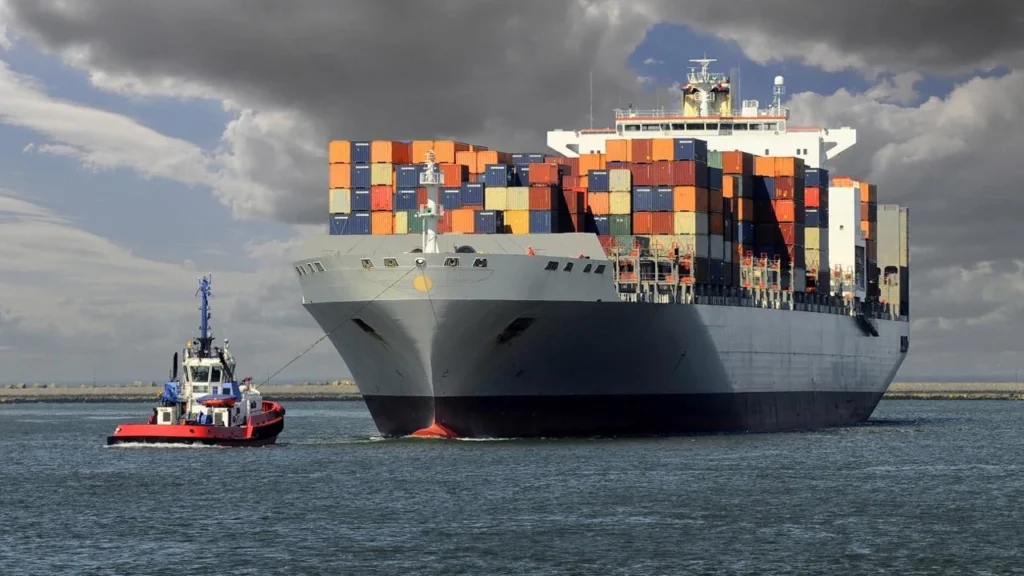
Understanding Shipping Options from China to Iran
When it comes to importing goods from China to Iran, understanding the various shipping options available is crucial for optimizing cost and efficiency. Each method of transportation presents unique advantages and challenges, and the choice often hinges on several key factors, including the nature of the goods, urgency, and budget.
Overview of Shipping Methods: Air vs. Sea Freight
Shipping from China to Iran primarily includes Air Freight and Sea Freight.
Air Freight
Air freight is renowned for its speed. Ideal for urgent shipments, air freight usually provides delivery within a few days to major Iranian cities. However, this speed comes at a premium cost. The following are notable characteristics of air freight:
- Speed: Typically takes 3 to 7 days.
- Cost: Generally more expensive than sea freight, making it suitable for high-value or time-sensitive goods.
- Weight Limitations: Air cargo has stricter weight and size restrictions compared to sea freight.
Sea Freight
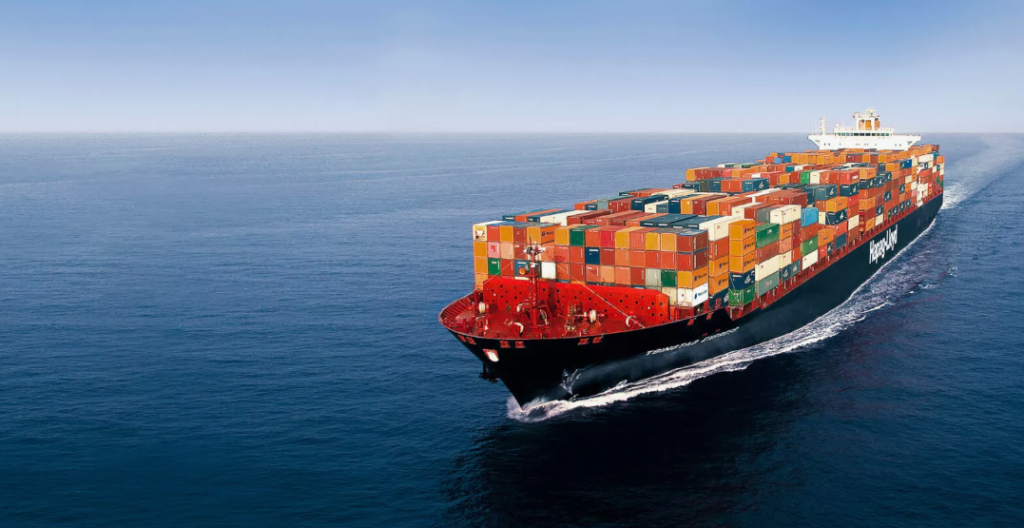
On the other hand, sea freight is the most economical choice for transporting bulk goods. While it requires a longer transit time—often several weeks—it is ideal for larger shipments. Key points about sea freight include:
- Cost Efficiency: More cost-effective for large volumes, especially for low-value items.
- Transit Time: Typically takes 20 to 45 days, depending on the port of departure and destination.
- Capacity: Capable of accommodating oversized cargo that air transport cannot handle.
| Shipping Method | Transit Time | Cost | Weight Limitations |
|---|---|---|---|
| Air Freight | 3-7 days | Higher | Stricter |
| Sea Freight | 20-45 days | Lower | More flexible |
Key Factors Influencing Shipping Costs
When determining the most viable shipping method, several factors influence the cost beyond the basic pricing. These include:
- Distance: The distance between the shipping origin in China and the destination in Iran will affect transportation costs. Longer distances generally incur higher charges.
- Weight and Volume: Heavier and bulkier shipments are costlier to transport, particularly with air freight. Shipping companies often use a charging system based on either actual weight or dimensional weight, whichever is higher.
- Insurance Costs: When shipping goods, insurance is recommended to safeguard against loss or damage. The cost will vary based on the value of the goods being transported.
- Customs Duties and Taxes: Import duties levied by Iranian customs can significantly impact the overall cost of shipping. Understanding these fees in advance is vital for accurate budgeting.
- Seasonal Demand: Shipping costs can fluctuate with seasonal demand. Peak seasons may lead to increased rates due to high volume and limited capacity.
Shipping From China to Middle East Countries:
- Shipping from China to Saudi Arabia
- Shipping from China to UAE
- Shipping from china to KUWAIT
- Shipping From China To EGYPT
- Shipping from China to Bahrain
- Shipping From China To Jordan
- Shipping From China To Israel
- Shipping from China to Qatar
- Shipping From China To IRAQ
- Shipping from China to Iran
Shipping Costs: A Detailed Breakdown
Having a comprehensive understanding of the costs involved in shipping from China to Iran is essential for businesses.
Average Shipping Costs for Air Freight
Air freight costs can vary widely based on multiple factors such as weight, dimension, and speed of delivery. On average, shipping goods via air from China to Iran costs approximately $5 to $10 per kilogram for standard service. Express services may push this rate higher, depending on the urgency of the shipment.
Average Shipping Costs for Sea Freight
When considering sea freight, the cost typically ranges between $1,000 to $3,000 for a 20-foot container, depending on the shipping line and specific routes. This cost can vary based on fuel prices, which are influenced by global oil prices, and the demand for shipping capacity.
| Shipping Method | Average Cost | Unit of Measurement |
|---|---|---|
| Air Freight | $5 – $10 | Per kilogram |
| Sea Freight | $1,000 – $3,000 | Per 20-foot container |
Hidden Fees and Additional Charges
In addition to the basic shipping costs, shippers must be aware of potential hidden fees and additional charges that can arise during the shipping process:
- Handling Fees: Fees may be applied by both the origin and destination terminals for the handling of goods.
- Storage Fees: If goods are held at customs for an extended period, storage charges can accrue.
- Documentation Fees: Charges for customs paperwork and other documentation are common and vary by shipping provider.
- Destination Charges: These charges include delivery to the final destination, which may be outlined as a separate cost.
Understanding these complexities will enable importers to budget effectively and avoid unexpected financial surprises. For businesses looking for a reliable partner in managing these logistics, Dantful International Logistics offers a comprehensive suite of services, including customs clearance, warehouse services, and insurance services to ensure a smooth shipping process from China to Iran.
Transit Times: What to Expect
In the world of international logistics, understanding transit times is crucial for effective planning and inventory management. When shipping from China to Iran, both Air Freight and Sea Freight offer distinct transit times that impact delivery schedules and overall business operations.
Average Transit Times for Air Freight
Air freight is the fastest shipping method available. Generally, shipments can be expected to reach Iran within 3 to 7 days. This speed is particularly advantageous for high-value items or time-sensitive deliveries. However, factors such as route efficiency and customs clearance at the destination can occasionally cause delays, which should be factored into your logistics planning.
Average Transit Times for Sea Freight
Sea freight, while more economical, has notably longer transit times. On average, shipments can take anywhere from 20 to 45 days to arrive in Iran, depending on various factors such as the port of origin in China and the specific destination port in Iran. Seasonal fluctuations and shipping line schedules may also affect these estimates, making it essential to plan ahead.
| Shipping Method | Average Transit Time |
|---|---|
| Air Freight | 3-7 days |
| Sea Freight | 20-45 days |
Factors Affecting Shipping Speed
Several factors influence the overall shipping speed from China to Iran:
- Distance: Longer distances typically result in longer transit times. The chosen ports of departure and arrival play a significant role in determining the overall duration of the shipment.
- Weather Conditions: Adverse weather can lead to delays in both air and sea shipments. Storms, heavy rains, or fog can disrupt schedules, particularly for air freight.
- Customs Clearance: The efficiency of customs procedures in both China and Iran can significantly impact transit times. Delays in documentation or inspections can extend delivery times.
- Freight Forwarder Efficiency: The capability and practices of the freight forwarder handling the shipment can also affect speed. Experienced forwarders can navigate potential delays and streamline processes.
You may be interested in the following related articles:
- Container Shipping Costs from China to Savannah: What You Need to Know
- Exploring the Benefits of Sea Freight from China to Turkey
- The Ultimate Guide to Sea Freight from China to Saudi Arabia
- The Ultimate Guide to Sea Freight from China to Algeria
- Step-by-Step Guide to Sea Freight From China to Iraq
- Tips to Find the Cheapest Shipping Company from China to Sweden
How to Choose the Right Shipping Company
Selecting a reliable shipping company is pivotal to successful international trade. The right partner can not only ensure timely delivery but also optimize costs and minimize risks.

Comparing Shipping Companies: Key Metrics to Evaluate
When evaluating shipping companies, consider the following key metrics:
- Transit Times: Compare the average transit times offered by different companies for both air and sea freight.
- Cost Structure: Analyze base rates as well as any additional fees or surcharges that may apply.
- Service Options: Look for providers that offer a range of services, including insurance services, customs clearance, and warehouse services.
- Tracking Capabilities: Check if the shipping company provides real-time tracking options for added transparency and peace of mind.
The Role of Freight Forwarders in Cost Reduction
Freight forwarders serve as intermediaries in the shipping process, offering valuable services that can lead to cost savings. They have established relationships with carriers, allowing them to negotiate better rates and pass those savings onto customers. Additionally, freight forwarders can provide guidance on optimizing shipping routes and methods based on shipment characteristics, ultimately improving efficiency and reducing expenses.
Customer Reviews and Reputation: What to Look For
A shipping company’s reputation is an essential aspect of your decision-making process. Consider the following when researching potential partners:
- Customer Feedback: Analyze reviews from previous clients to gauge satisfaction levels and service reliability. Look for trends in feedback regarding delivery times, customer service, and overall experience.
- Industry Reputation: Check if the shipping company has received any awards or certifications, which can indicate higher trust levels within the industry.
- Experience: A company with a long-standing presence in the market is likely to have robust processes in place for handling potential issues.
Dantful International Logistics Services:
- Dantful Ocean Freight Services
- Air Freight From China
- Amazon FBA Freight Forwarding
- WAREHOUSE Services
- One-Stop Customs Clearance Solution
- Cargo Insurance Services in China
- DDP Shipping Services By Dantful Logistics
- Out of Gauge Cargo Transportation Shipping Services
Customs Regulations and Import Duties
Understanding customs regulations and potential import duties is a vital aspect of the shipping process from China to Iran. This knowledge can help importers navigate the complexities of international trade and avoid unexpected costs.
Understanding Customs Procedures in Iran
Iran’s customs procedures involve several steps:
- Documentation: Importers must prepare and submit various documents, including commercial invoices, packing lists, and bills of lading.
- Customs Declaration: A customs declaration form must be completed and submitted, detailing the nature and value of the goods being imported.
- Inspection: Customs officials may conduct inspections to verify the contents of shipments against the submitted documents.
Familiarity with these procedures can help expedite the customs clearance process.
Common Import Duties and Taxes
Import duties and taxes in Iran can vary based on the type of goods being imported. Common charges may include:
- Customs Duty: This varies based on the product classification and is generally a percentage of the goods’ value.
- Value Added Tax (VAT): A standard VAT rate (approximately 9%) is applied to most imported goods.
- Additional Taxes: Some products may incur additional taxes depending on Iran’s trade policies.
It’s essential to consider these charges when estimating the total cost of importing goods.
Tips for Reducing Customs Charges
Reducing customs charges requires careful planning and strategy. Here are some tips to consider:
- Classify Goods Correctly: Ensure that products are classified accurately to avoid overpaying customs duties.
- Optimize Documentation: Complete and submit all required documentation accurately and on time to minimize delays and potential fines.
- Take Advantage of Free Trade Agreements: Explore any applicable free trade agreements that may reduce or eliminate duties on certain goods.
Tips for Reducing Shipping Costs
Implementing cost-saving strategies in your shipping process can lead to significant savings over time. Here are effective methods for reducing shipping costs when importing from China to Iran.
Strategies for Cost-Effective Shipping
- Consolidate Shipments: Whenever possible, consolidate shipments to maximize container usage and reduce per-unit shipping costs.
- Negotiate Rates: Don’t hesitate to negotiate rates with shipping companies or freight forwarders, especially if you have consistent shipping volumes.
- Plan Shipments in Advance: Advance planning can lead to lower rates, as shipping companies often offer discounts for bookings made ahead of time.
Using Freight Forwarders and Logistics Services
Leveraging the expertise of freight forwarders like Dantful International Logistics can be instrumental in achieving cost-effectiveness. Dantful’s services encompass a wide range of logistics solutions, including customs clearance, warehouse services, and insurance services, all tailored to optimize shipping processes. Their experience in the industry enables clients to benefit from negotiated shipping rates and streamlined logistics solutions that can lower overall costs.
FAQs
1. What are the main shipping options available for importing goods from China to Iran?
The primary shipping methods are Air Freight and Sea Freight. Air freight is faster (3 to 7 days) but more expensive, ideal for time-sensitive shipments, while sea freight is more economical (20 to 45 days) for larger volumes.
2. How much does it typically cost to ship goods from China to Iran?
- Air Freight costs approximately $5 to $10 per kilogram.
- Sea Freight costs range between $1,000 and $3,000 for a 20-foot container, depending on the shipping line and route.
3. What factors influence shipping costs?
Shipping costs are affected by several factors, including:
- Distance: Longer distances incur higher charges.
- Weight and Volume: Heavier and bulkier shipments are more costly.
- Insurance Costs: Recommended to protect against loss or damage.
- Customs Duties and Taxes: Import fees can significantly impact total costs.
- Seasonal Demand: Costs may fluctuate based on seasonal shipping volumes.
4. How long does it take to ship goods from China to Iran?
- Air Freight: Typically takes 3 to 7 days.
- Sea Freight: Usually takes 20 to 45 days, depending on origin and destination ports.
5. Are there hidden fees I should be aware of when shipping?
Yes, potential hidden fees may include:
- Handling Fees: Applied by terminals for goods handling.
- Storage Fees: Charged if goods are held at customs for an extended period.
- Documentation Fees: Costs for customs paperwork.
- Destination Charges: Separate costs for delivery to the final destination.
6. What customs regulations should I be aware of when importing into Iran?
Importers must prepare necessary documentation (commercial invoices, packing lists, bills of lading) and complete a customs declaration. Duties and taxes, including customs duty and VAT (around 9%), will apply based on the type of goods.
7. How can I reduce shipping costs?
To reduce shipping costs, consider:
- Consolidating Shipments: To maximize container usage.
- Negotiating Rates: With shipping companies or freight forwarders.
- Planning in Advance: To take advantage of lower rates for early bookings.

Young Chiu is a seasoned logistics expert with over 15 years of experience in international freight forwarding and supply chain management. As CEO of Dantful International Logistics, Young is dedicated to providing valuable insights and practical advice to businesses navigating the complexities of global shipping.
The other language versions of this article
- أرخص شركة شحن من الصين إلى إيران: ما تحتاج إلى معرفته
- Goedkoopste rederij van China naar Iran: wat u moet weten
- Compagnie maritime la moins chère de Chine vers l’Iran : ce que vous devez savoir
- Günstigstes Versandunternehmen von China in den Iran: Was Sie wissen müssen
- Compagnia di spedizione più economica dalla Cina all’Iran: cosa devi sapere
- La empresa de envío más barata de China a Irán: lo que necesita saber
- A empresa de transporte mais barata da China para o Irã: o que você precisa saber
- Самая дешевая судоходная компания из Китая в Иран: что вам нужно знать
- Çin’den İran’a En Ucuz Nakliye Şirketi: Bilmeniz Gerekenler






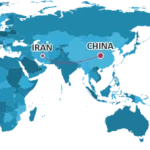






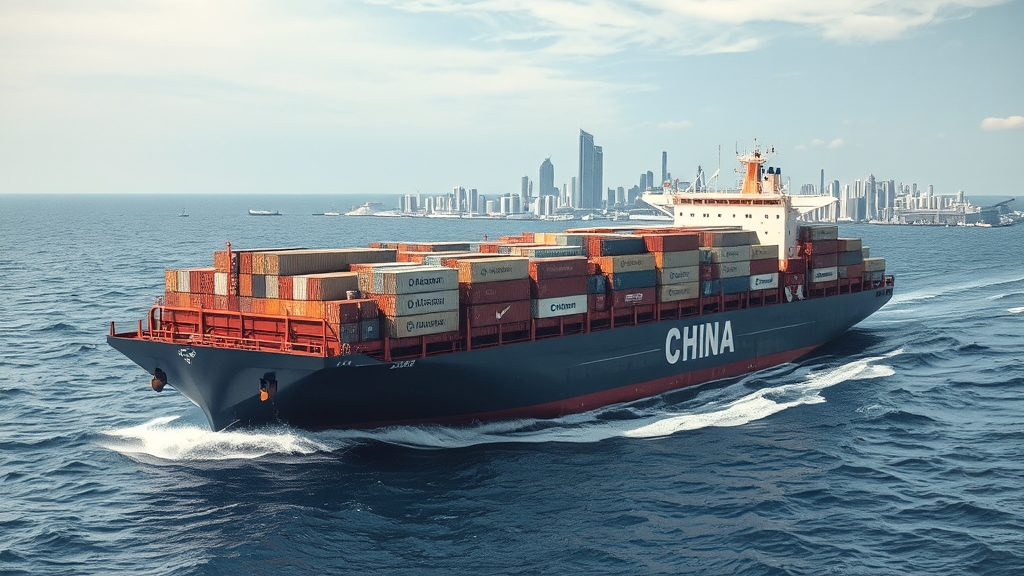
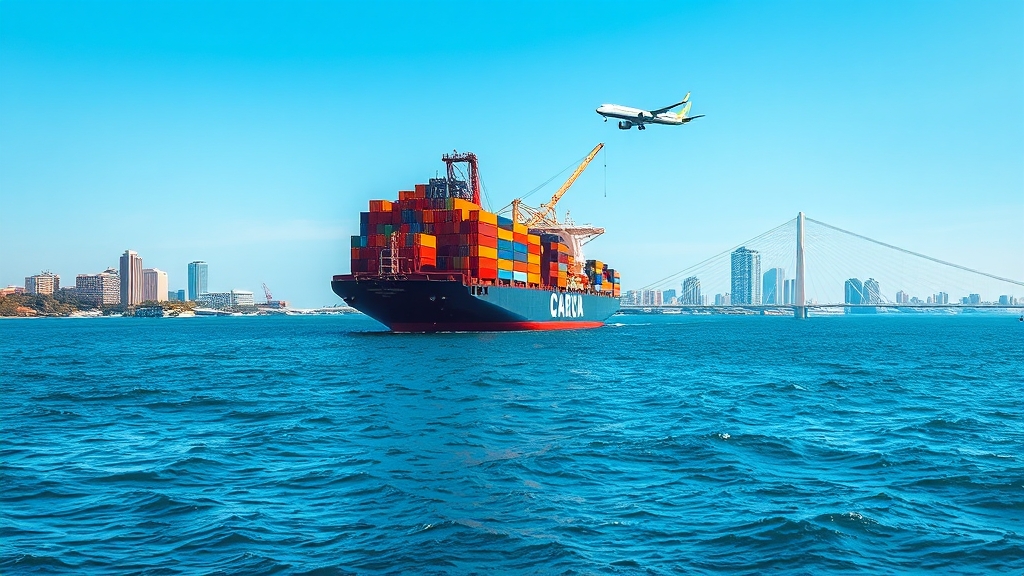
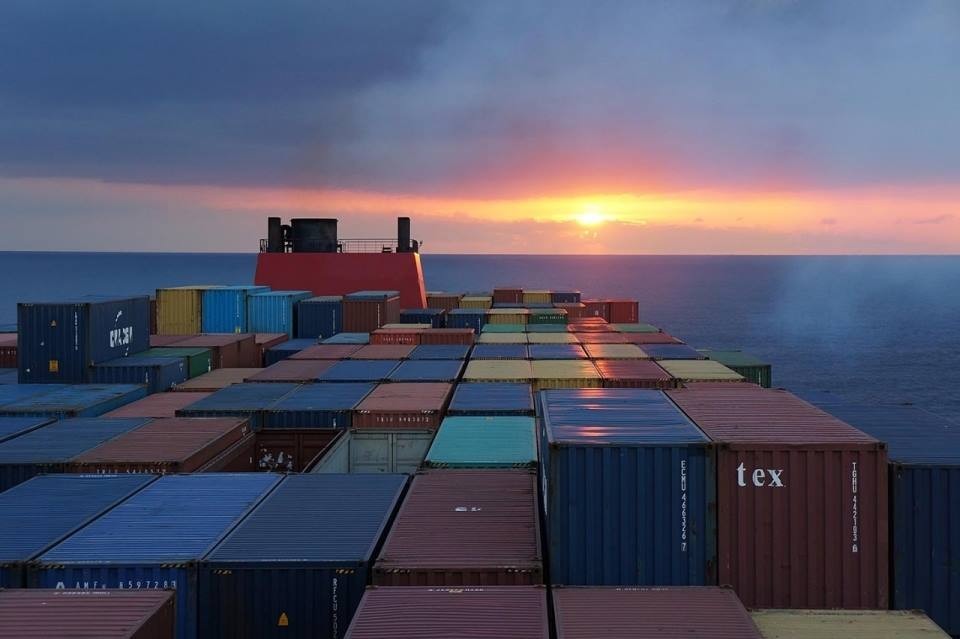





 Afrikaans
Afrikaans Shqip
Shqip አማርኛ
አማርኛ العربية
العربية Հայերեն
Հայերեն Azərbaycan dili
Azərbaycan dili Euskara
Euskara Беларуская мова
Беларуская мова বাংলা
বাংলা Bosanski
Bosanski Български
Български Català
Català Cebuano
Cebuano Chichewa
Chichewa 简体中文
简体中文 繁體中文
繁體中文 Corsu
Corsu Hrvatski
Hrvatski Čeština
Čeština Dansk
Dansk Nederlands
Nederlands English
English Esperanto
Esperanto Eesti
Eesti Filipino
Filipino Suomi
Suomi Français
Français Galego
Galego ქართული
ქართული Deutsch
Deutsch Ελληνικά
Ελληνικά Kreyol ayisyen
Kreyol ayisyen Harshen Hausa
Harshen Hausa Ōlelo Hawaiʻi
Ōlelo Hawaiʻi עִבְרִית
עִבְרִית हिन्दी
हिन्दी Hmong
Hmong Magyar
Magyar Íslenska
Íslenska Igbo
Igbo Bahasa Indonesia
Bahasa Indonesia Gaeilge
Gaeilge Italiano
Italiano 日本語
日本語 Basa Jawa
Basa Jawa ಕನ್ನಡ
ಕನ್ನಡ Қазақ тілі
Қазақ тілі ភាសាខ្មែរ
ភាសាខ្មែរ 한국어
한국어 كوردی
كوردی Кыргызча
Кыргызча ພາສາລາວ
ພາສາລາວ Latin
Latin Latviešu valoda
Latviešu valoda Lietuvių kalba
Lietuvių kalba Lëtzebuergesch
Lëtzebuergesch Македонски јазик
Македонски јазик Malagasy
Malagasy Bahasa Melayu
Bahasa Melayu മലയാളം
മലയാളം Maltese
Maltese Te Reo Māori
Te Reo Māori मराठी
मराठी Монгол
Монгол ဗမာစာ
ဗမာစာ नेपाली
नेपाली Norsk bokmål
Norsk bokmål پښتو
پښتو فارسی
فارسی Polski
Polski Português
Português ਪੰਜਾਬੀ
ਪੰਜਾਬੀ Română
Română Русский
Русский Samoan
Samoan Gàidhlig
Gàidhlig Српски језик
Српски језик Sesotho
Sesotho Shona
Shona سنڌي
سنڌي සිංහල
සිංහල Slovenčina
Slovenčina Slovenščina
Slovenščina Afsoomaali
Afsoomaali Español
Español Basa Sunda
Basa Sunda Kiswahili
Kiswahili Svenska
Svenska Тоҷикӣ
Тоҷикӣ தமிழ்
தமிழ் తెలుగు
తెలుగు ไทย
ไทย Türkçe
Türkçe Українська
Українська اردو
اردو O‘zbekcha
O‘zbekcha Tiếng Việt
Tiếng Việt Cymraeg
Cymraeg יידיש
יידיש Yorùbá
Yorùbá Zulu
Zulu